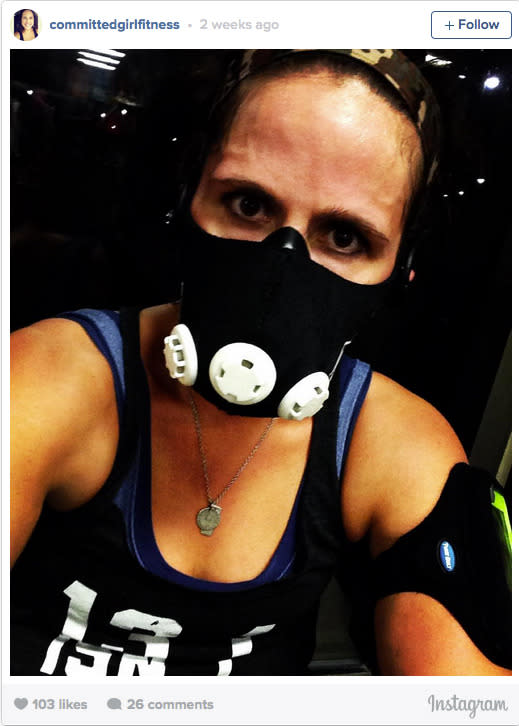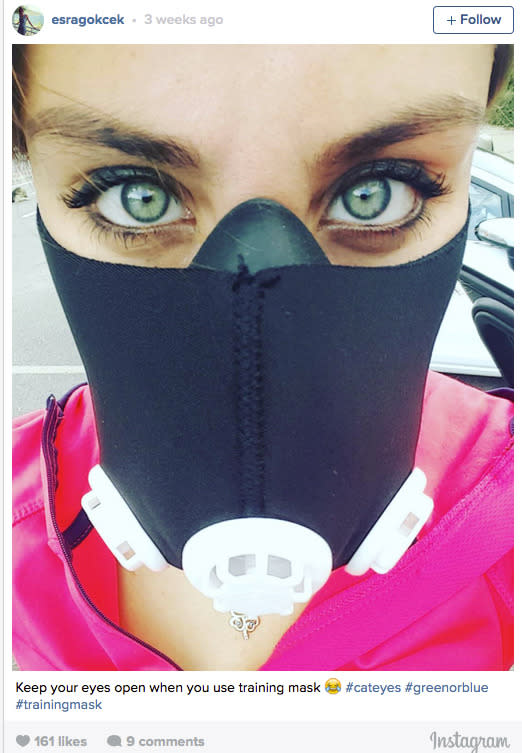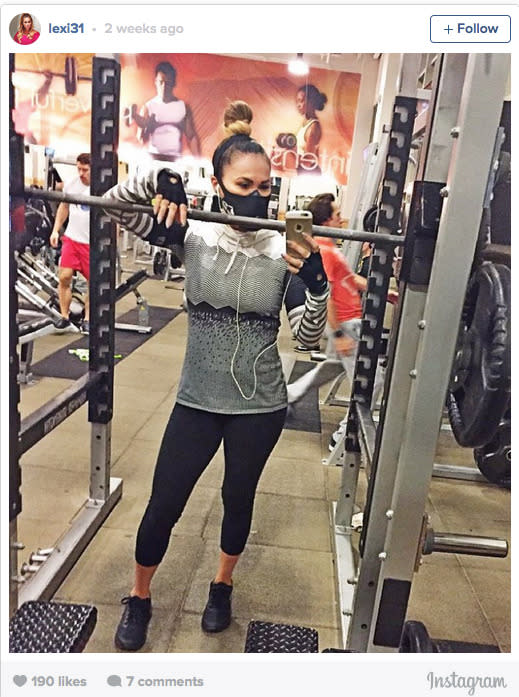This Freaky Gym Trend Belongs in a Sci-Fi Movie

Is there an actual benefit to working out with an elevation-training mask?
Last week, I strolled into my gym and was midway through a yawn when a dude on the treadmill caught my eye.
No, it’s not because I thought he was cute. He might have been, but I couldn’t tell because most of his face was covered by what looked like a hazmat mask. I immediately wondered, “Is he okay? Is something wrong with the air in here?”
I consulted my good friend Google and found that gym goers everywhere have been strapping these intense masks to their faces at the start of their workouts. But why?!

These slightly freaky masks are known as elevation training masks and claim to simulate exercising at a high altitude, promising to increase your lung capacity and strengthen your diaphragm to boost your performance.
But is it really better to sweat at a high altitude? And do these masks really replicate those circumstances?
RELATED: 12 Ways to Burn More Calories During ANY Workout

“When you’re at high altitude, the air is less dense, so there’s less oxygen compared to sea level,“ says Benjamin Levine, M.D., of Texas Health Presbyterian Hospital. Since your brain and body sensors are very sensitive to the level of oxygen in your blood, your brain receives signals to breathe more to deliver more oxygen throughout your body…which causes you to huff and puff more than normal.
The mask I saw on treadmill guy at the gym can’t alter the amount of oxygen in the air. What it does, says Levine, is add resistance to your breathing, as if you’re breathing through a straw. So its only similarity to altitude training is that you’ll feel like it’s harder to breathe.
RELATED: Get Holy Sh*t You’re Fast Results with This Ultimate Runner’s Workout
But gimmicky marketing aside, there’s no strong correlation between training at a higher altitude and seeing increased fitness results, says Levine. “We studied training at altitude and found that it didn’t improve respiratory muscle strength or endurance more than training at sea level.”

While Levine believes that, under very careful and controlled conditions, you can train respiratory muscles to reduce fatigue and improve blood flow, he says these training masks’ only benefit would be a placebo effect.
When the mask is on, you have to really suck down air (which is partially blocked by valves on these masks). So when you take it off, breathing feels easy as pie.
If you want to look intimidating AF in the gym, one of these masks will do the trick. Otherwise, we’ll take our oxygen unfiltered, please.
More from Women’s Health:
THIS Is What the Gym Locker Room of Our Dreams Would Look Like
I Went on a $15,000 Fitness Retreat—Here’s What I Learned
